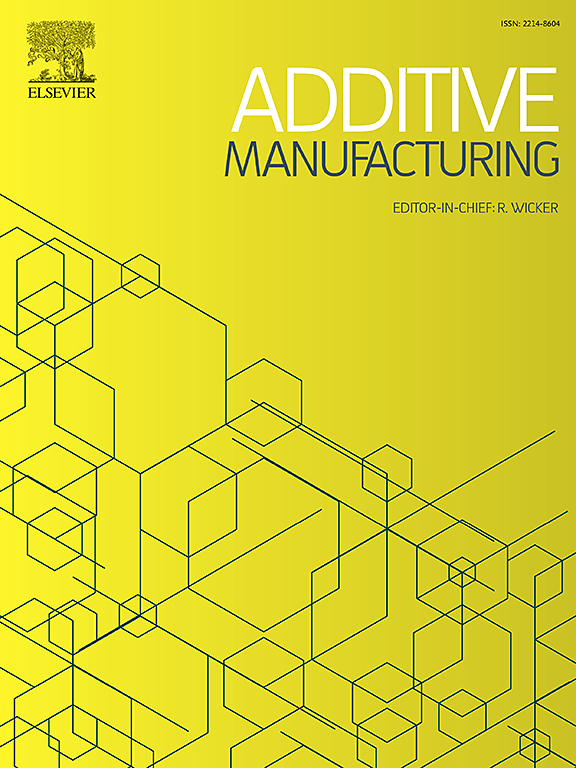JEMA-SINDYc: End-to-end Control using Joint Embedding Multimodal Alignment in Directed Energy Deposition
IF 11.1
1区 工程技术
Q1 ENGINEERING, MANUFACTURING
引用次数: 0
Abstract
Bringing AI models from digital to real-world applications presents significant challenges due to the complexity and variability of physical environments, often leading to unexpected model behaviors. We propose a framework that learns to translate images into control actions by modeling multimodal real-time data and system dynamics. This end-to-end controller offers enhanced explainability and robustness, making it well suited for complex manufacturing processes. This end-to-end framework differs from traditional approaches that rely on manually engineered features by learning complex relationships directly from raw data. Labels are only required during training to define the observable feature to be optimized. This adaptability significantly reduces development time and enhances scalability across varying conditions. This approach was tested in the Directed Energy Deposition (L-DED) process, a laser-based metal additive manufacturing technique that produces near-net-shape parts with exceptional energy efficiency and flexibility in both geometry and material selection. L-DED is inherently complex, involving multiphysics interactions, multiscale phenomena, and dynamic behaviors, which make modeling and optimization difficult. Effective control is crucial to ensure part quality in this dynamic environment. To address these challenges, we introduce Joint Embedding Multimodal Alignment with Sparse Identification of Nonlinear Dynamics for control (JEMA-SINDYc). It combines an image-based JEMA monitoring model, which predicts the melt pool size using only the on-axis sensor with labels provided by the off-axis camera, and dynamic modeling using SINDYc, which acts as a World Model by capturing system dynamics within the embedding space. Together, these components enable the development of an advanced controller trained via Behavioral Cloning. This approach improves part quality by minimizing porosity and reducing deformation. Thin-walled cylindrical parts were produced to validate and compare this approach with other control strategies, including both open-loop and JEMA-PID. This framework improves the reliability of AI-driven manufacturing and enhances control of complex industrial processes, potentially enabling wider adoption of the process.
JEMA-SINDYc:在定向能沉积中使用关节嵌入多模态对准的端到端控制
由于物理环境的复杂性和可变性,将人工智能模型从数字应用到现实应用中提出了重大挑战,通常会导致意想不到的模型行为。我们提出了一个框架,该框架通过建模多模态实时数据和系统动力学来学习将图像转化为控制动作。这种端到端控制器提供了增强的可解释性和鲁棒性,使其非常适合复杂的制造过程。这种端到端框架与传统方法不同,传统方法依赖于通过直接从原始数据中学习复杂关系来手动设计功能。只有在训练过程中需要标签来定义要优化的可观察特征。这种适应性大大减少了开发时间,并增强了不同条件下的可伸缩性。这种方法在定向能沉积(L-DED)工艺中进行了测试,这是一种基于激光的金属增材制造技术,可以生产出具有优异能效和几何形状和材料选择灵活性的近净形状零件。L-DED本身就很复杂,涉及多物理场相互作用、多尺度现象和动态行为,这给建模和优化带来了困难。在这种动态环境下,有效的控制是保证零件质量的关键。为了解决这些挑战,我们引入了联合嵌入多模态对齐与非线性动力学稀疏识别控制(JEMA-SINDYc)。它结合了基于图像的JEMA监测模型,该模型仅使用轴上传感器和离轴相机提供的标签来预测熔池大小,以及使用SINDYc进行动态建模,SINDYc通过捕获嵌入空间内的系统动态来充当世界模型。总之,这些组件使通过行为克隆训练的高级控制器的发展。这种方法通过最小化孔隙率和减少变形来提高零件质量。薄壁圆柱形零件的生产验证了这种方法,并将其与其他控制策略(包括开环和JEMA-PID)进行了比较。该框架提高了人工智能驱动制造的可靠性,增强了对复杂工业过程的控制,有可能使该过程得到更广泛的采用。
本文章由计算机程序翻译,如有差异,请以英文原文为准。
求助全文
约1分钟内获得全文
求助全文
来源期刊

Additive manufacturing
Materials Science-General Materials Science
CiteScore
19.80
自引率
12.70%
发文量
648
审稿时长
35 days
期刊介绍:
Additive Manufacturing stands as a peer-reviewed journal dedicated to delivering high-quality research papers and reviews in the field of additive manufacturing, serving both academia and industry leaders. The journal's objective is to recognize the innovative essence of additive manufacturing and its diverse applications, providing a comprehensive overview of current developments and future prospects.
The transformative potential of additive manufacturing technologies in product design and manufacturing is poised to disrupt traditional approaches. In response to this paradigm shift, a distinctive and comprehensive publication outlet was essential. Additive Manufacturing fulfills this need, offering a platform for engineers, materials scientists, and practitioners across academia and various industries to document and share innovations in these evolving technologies.
 求助内容:
求助内容: 应助结果提醒方式:
应助结果提醒方式:


